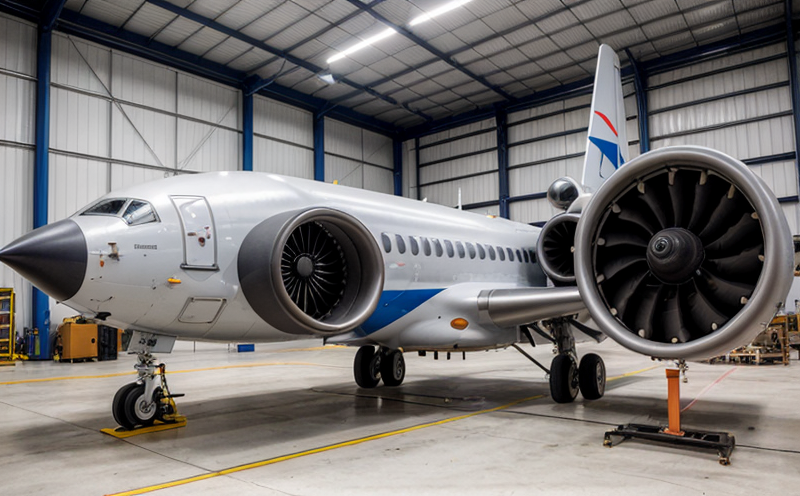Long-Duration Endurance Vibroacoustic Testing for Defense Platforms
The Long-Duration Endurance Vibroacoustic Testing service is a critical component in ensuring the durability and reliability of aerospace and defense platforms. This testing method subjects materials, components, and assemblies to prolonged exposure to vibration and acoustic environments that mimic real-world operating conditions. The goal is to identify potential weaknesses or failure points before they occur under operational stress.
Defense platforms are subject to some of the most demanding environmental stresses in any industrial sector. Whether it's the extreme temperatures, vibrations from propulsion systems, or the noise generated by various components, these factors can significantly impact performance and longevity. By simulating these conditions during testing, manufacturers and researchers gain valuable insights into how their products will perform under actual field use.
The process involves precise control over multiple parameters such as frequency range, amplitude, duration, and environmental variables like temperature and humidity. This ensures that the test results accurately reflect real-world scenarios. The equipment used for this type of testing includes sophisticated shakers capable of producing high levels of vibration across a wide spectrum, along with sound chambers designed to generate realistic acoustic environments.
For quality managers and compliance officers, understanding these tests is essential because they provide critical data needed for certification processes. R&D engineers rely on the results from such tests to refine designs, improve materials selection, and optimize manufacturing processes. For procurement teams, knowing about this testing ensures that suppliers are delivering products that meet stringent requirements.
Long-Duration Endurance Vibroacoustic Testing is particularly important in aerospace and defense due to the critical nature of these industries where failures could have catastrophic consequences. The testing process helps prevent such issues by identifying potential problems early on, allowing for corrective actions before a product reaches end-users.
To ensure accuracy and reliability, this service adheres strictly to international standards like ISO 16739 and ASTM E2048. These guidelines provide the framework necessary for consistent testing procedures across different facilities worldwide.
Scope and Methodology
| Parameter | Description |
|---|---|
| Vibration Amplitude | Range: ±50 g to ±100 g (depending on the platform) |
| Vibration Frequency Range | Frequency: 20 Hz to 3,000 Hz |
| Ambient Temperature | Range: -40°C to +150°C (for different platforms) |
| Environmental Humidity | Relative Humidity: 20% RH to 98% RH |
| Test Duration | Up to 1,000 hours depending on the specific platform requirements |
The testing begins with thorough preparation of specimens according to specified procedures. This includes cleaning, labeling, and positioning them appropriately within the test chamber. Once ready, the equipment generates controlled vibrations and acoustic signals which are applied systematically over extended periods.
During the test, continuous monitoring is carried out using advanced instrumentation such as accelerometers, microphones, and temperature sensors. Data collected throughout the process is analyzed in real-time to ensure compliance with set criteria. After completion of the specified duration, the specimens undergo final inspection to assess any signs of damage or degradation.
Reporting follows strict protocols defined by relevant standards. Reports typically include detailed descriptions of test conditions, observed phenomena, and conclusions drawn from analysis. This information serves as crucial documentation for decision-making processes related to product development and quality assurance.
International Acceptance and Recognition
The Long-Duration Endurance Vibroacoustic Testing service enjoys widespread recognition within the aerospace and defense sectors globally. Compliance with international standards like ISO 16739 ensures that test results are accepted across various markets, thereby facilitating easier market access for manufacturers.
Many leading organizations have adopted this testing methodology as part of their quality assurance programs. For instance, NATO recognizes these tests for assessing the reliability and safety of defense systems. Similarly, European Union directives mandate certain types of vibroacoustic evaluation before approving new products into service.
By adhering to internationally accepted practices, companies can demonstrate their commitment to delivering high-quality products that meet stringent safety standards. This enhances brand reputation and builds trust among customers who value robust performance from their suppliers.
Environmental and Sustainability Contributions
Reduces waste by identifying defects early in the production cycle, minimizing material and resource losses.
Promotes energy efficiency through optimized design iterations based on accurate testing data.
Encourages recycling efforts by providing insights into recyclable components and materials suitable for use in future products.
Supports sustainable manufacturing practices by highlighting areas where environmental impacts can be minimized during the product lifecycle.
The focus on sustainability extends beyond just reducing waste; it also involves enhancing resource efficiency. By improving design through rigorous testing, manufacturers can develop lighter yet stronger structures that require less raw material input while maintaining structural integrity and performance levels.
This service contributes significantly towards creating more sustainable defense platforms by ensuring they operate efficiently with minimal environmental footprint. It supports the overall objective of fostering greener technologies within the aerospace and defense industry.





